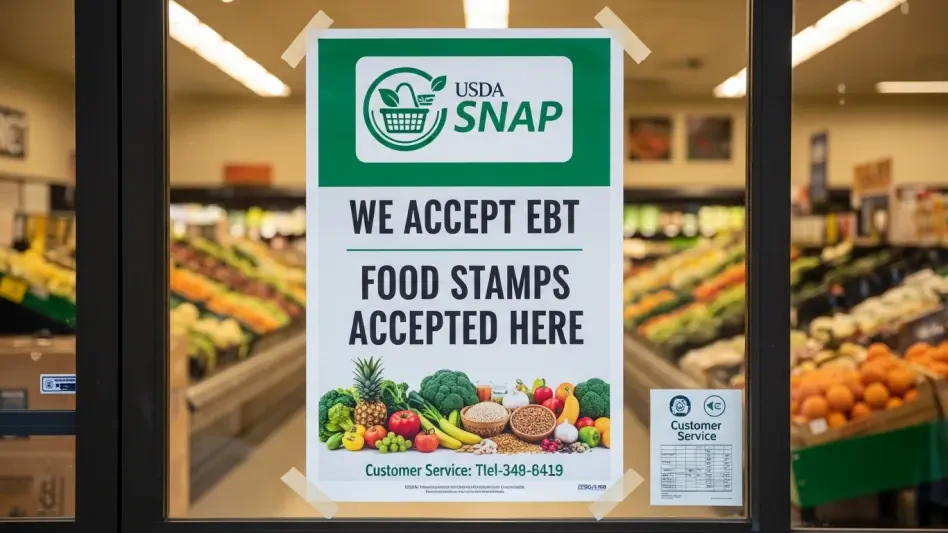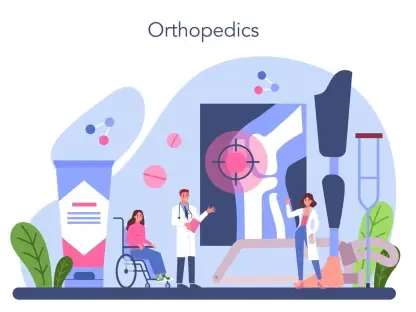In a nation where 47 million people grapple with limited food access, the Supplemental Nutrition Assistance Program (SNAP) stands as a critical lifeline for low-income households, yet sweeping changes under the Trump administration have introduced a seismic shift. These changes, slashing $187 billion in funding over the next decade, alter the very fabric of food assistance. This market analysis delves into the economic and societal ripples of these cuts, exploring how they impact recipients, strain state budgets, and disrupt the food supply chain. By examining current trends, data-driven insights, and future projections, this piece aims to illuminate the broader implications for stakeholders across the agricultural, retail, and public health sectors.
Policy Shifts Driving Market Disruption
The overhaul of SNAP, embedded in recent legislation known as the One Big Beautiful Bill Act, marks a historic reduction in federal support for food assistance. With a nearly 20% cut in funding projected over a 10-year span, the program faces unprecedented challenges in serving its 42 million beneficiaries. New eligibility rules, including stricter work requirements, mandate that recipients document 80 hours of work or qualifying activities monthly, with non-compliance resulting in benefit caps. This policy shift, effective since late last year, is poised to exclude an estimated 3 million individuals, creating a significant contraction in the program’s reach and reshaping demand patterns within the food assistance ecosystem.
Beyond individual impacts, the financial restructuring places a heavier burden on state governments. Previously, federal funding covered all food costs and shared administrative expenses, but states must now bear 75% of administrative costs and a portion of food expenses. This change translates to a median cost increase of over 200% for states, with an additional $11 billion in food cost burdens projected. Such fiscal pressures threaten the sustainability of SNAP in certain regions, potentially leading to market fragmentation as some states consider opting out, thereby altering the national landscape of food aid distribution.
The policy also introduces restrictions on purchasable items in several states, limiting options like candy and soda to align with health-focused initiatives. While intended to promote better nutrition, historical data suggests these measures may not achieve desired outcomes and could instead deter retailer participation or increase operational costs. These combined changes signal a move toward reduced federal involvement, setting the stage for significant market adjustments across related industries.
Economic Impacts on the Food Supply Chain
SNAP’s role extends beyond hunger relief, acting as a vital economic driver for the food industry. Each dollar spent through the program generates approximately $1.50 in economic activity, supporting grocery stores, farmers, and rural communities. However, the funding cuts and new compliance requirements are expected to cost retailers around $1.6 billion to implement, posing risks of store closures, particularly in underserved areas. Such outcomes could lead to higher consumer prices and reduced access to affordable food, amplifying market challenges for both SNAP recipients and the broader population.
Farmers and agricultural producers also face downstream effects from diminished SNAP spending. With fewer beneficiaries and restricted purchasing power, demand for staple goods may decline, hitting rural economies hardest. This trend could exacerbate existing disparities in food distribution networks, as smaller producers struggle to absorb the loss of a key revenue stream. Market analysts anticipate a potential shift in production priorities, with some farmers pivoting to alternative markets or export opportunities to offset domestic losses.
The ripple effects touch even the logistics and supply chain sectors, where reduced SNAP transactions may lead to lower volumes for distributors and wholesalers. This contraction could prompt consolidation among smaller players or force cost-cutting measures that impact service quality. As these dynamics unfold, the food supply chain braces for a period of uncertainty, with economic stability in low-income regions hanging in the balance.
Health Sector Fallout and Market Consequences
Food insecurity, already a pressing issue for millions, stands to worsen under the SNAP overhaul, with direct implications for the healthcare market. Research consistently links limited food access to adverse health outcomes, including mental health challenges, poor academic performance among children, and chronic conditions like diabetes in adults. Low-income individuals without SNAP benefits incur healthcare costs averaging $1,400 more annually than recipients, highlighting the program’s role in mitigating disparities.
This trend forecasts a growing burden on healthcare systems, as reduced food assistance likely drives up demand for medical services among vulnerable populations. Hospitals and clinics in economically disadvantaged areas may see spikes in uncompensated care, straining budgets and resources. Insurance providers, too, could face higher claims related to preventable conditions exacerbated by hunger, potentially leading to increased premiums or adjusted coverage models.
From a market perspective, the intersection of food insecurity and health outcomes underscores a critical feedback loop. As public health deteriorates, workforce productivity may decline, further dampening economic activity in affected communities. Stakeholders in the health sector are thus compelled to monitor these developments closely, as the long-term costs of SNAP cuts could far outweigh short-term fiscal savings.
Future Projections: Navigating a Fragmented Landscape
Looking ahead, the trajectory of SNAP suggests a future marked by reduced federal support and increased reliance on state and local resources. Projections indicate that without policy reversals, disparities in food access will deepen across regions, particularly if states withdraw from the program due to financial constraints. This fragmentation risks creating a patchwork system where aid availability varies widely, influencing migration patterns and local economies in unpredictable ways.
Emerging trends point to a surge in demand for private charities and food pantries as federal safety nets weaken. Nonprofits in various states have already reported overwhelming requests for emergency aid, signaling a shift in market dynamics toward community-driven solutions. However, these organizations often lack the capacity to fully bridge the gap, suggesting a potential crisis point for food assistance markets in the near term.
Technological innovations, such as digital tools for streamlining eligibility processes, offer a glimmer of hope for mitigating administrative burdens. Yet, their effectiveness hinges on funding and policy support, both of which remain uncertain under current priorities. Market forecasts over the next few years anticipate ongoing volatility, with stakeholders across sectors urged to prepare for adaptive strategies in response to evolving challenges.
Reflecting on the Path Forward
Looking back, the analysis of SNAP’s transformation under the Trump administration revealed a complex web of economic, health, and societal impacts that reshaped markets tied to food assistance. The $187 billion funding cut, coupled with stricter eligibility and state cost shifts, posed significant hurdles for millions of recipients while straining the food supply chain and healthcare systems. Retailers, farmers, and rural communities bore the brunt of diminished economic activity, while public health risks escalated amid rising food insecurity.
Moving forward, strategic interventions emerged as essential for softening the blow. Policymakers were encouraged to explore streamlined compliance mechanisms to prevent unnecessary exclusions, while states considered public-private partnerships to offset fiscal pressures. Community-level support, such as bolstering local food banks, offered immediate relief for those in need. Additionally, leveraging technology to enhance program accessibility stood out as a viable long-term goal. These steps, though not exhaustive, provided a foundation for addressing the fallout, urging stakeholders to remain agile in adapting to a rapidly changing landscape of food assistance markets.









